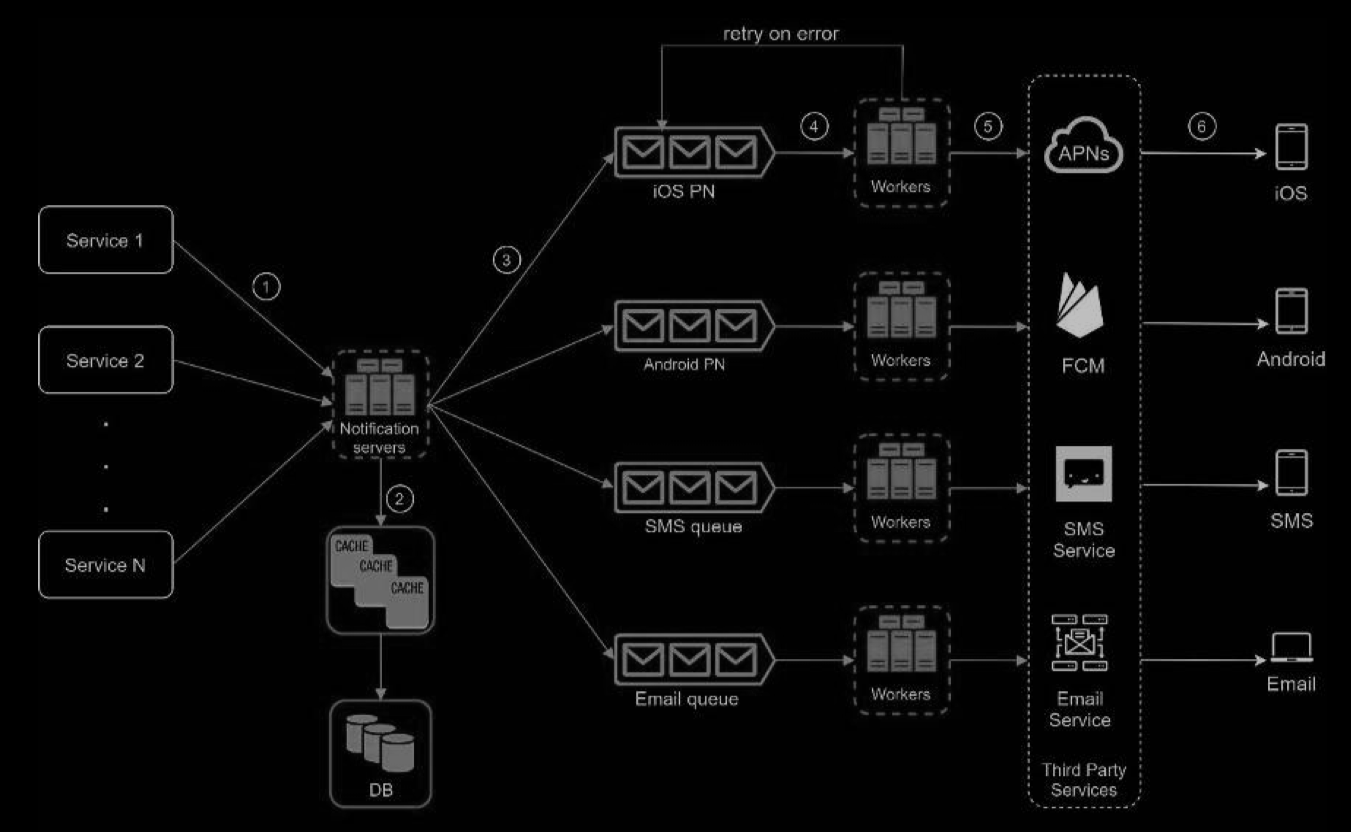Scope
-
Candidate: What types of notifications does the system support? Interviewer: Push notification, SMS message, and email.
-
Candidate: Is it a real-time system? Interviewer: Let us say it is a soft real-time system. We want a user to receive notifications as soon as possible. However, if the system is under a high workload, a slight delay is acceptable.
-
Candidate: What are the supported devices? Interviewer: iOS devices, android devices, and laptop/desktop.
-
Candidate: What triggers notifications? Interviewer: Notifications can be triggered by client applications. They can also be scheduled on the server-side.
-
Candidate: Will users be able to opt-out? Interviewer: Yes, users who choose to opt-out will no longer receive notifications.
-
Candidate: How many notifications are sent out each day? Interviewer: 10 million mobile push notifications, 1 million SMS messages, and 5 million emails.
High-level Design
Notification sending/receiving flow

Deep Dive
Reliability
Will recipients receive a notification exactly once?
The short answer is no. Although notification is delivered exactly once most of the time, the distributed nature could result in duplicate notifications. To reduce the duplication occurrence, we introduce a dedupe mechanism and handle each failure case carefully. Here is a simple dedupe logic:
When a notification event first arrives, we check if it is seen before by checking the event ID. If it is seen before, it is discarded. Otherwise, we will send out the notification.
Notification template
A large notification system sends out millions of notifications per day, and many of these notifications follow a similar format. Notification templates are introduced to avoid building every notification from scratch. A notification template is a preformatted notification to create your unique notification by customizing parameters, styling, tracking links, etc. Here is an example template of push notifications.
BODY:
You dreamed of it. We dared it. [ITEM NAME] is back — only until [DATE]. CTA:
Order Now. Or, Save My [ITEM NAME]
The benefits of using notification templates include maintaining a consistent format, reducing the margin error, and saving time.
Rate limiting
To avoid overwhelming users with too many notifications, we can limit the number of notifications a user can receive. This is important because receivers could turn off notifications completely if we send too often.
Retry mechanism
When a third-party service fails to send a notification, the notification will be added to the message queue for retrying. If the problem persists, an alert will be sent out to developers.
Security in push notifications
For iOS or Android apps, appKey and appSecret are used to secure push notification APIs. Only authenticated or verified clients are allowed to send push notifications using our APIs
Reference
- System Design Interview – An insider’s guide